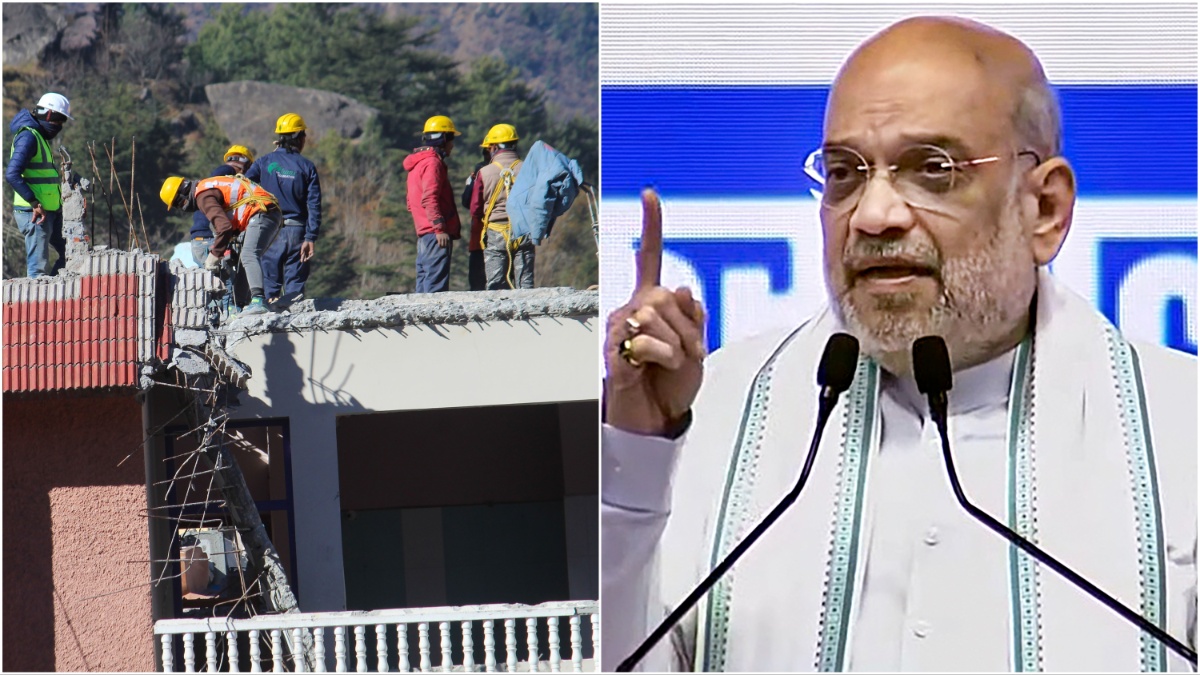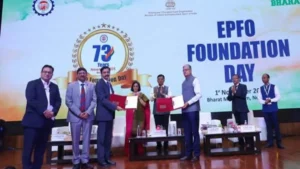Joshimath, a town in Uttarakhand, faced severe challenges due to landslides and ground subsidence. The high-level central committee, led by Union Home Minister Amit Shah, approved a comprehensive recovery and reconstruction (R&R) plan amounting to ₹1,658.17 crore to address the aftermath of these natural disasters.
Financial Allocations
- Central Assistance: The National Disaster Response Fund (NDRF) will contribute ₹1079.96 crore through the Recovery and Reconstruction window.
- Uttarakhand Government: The state will provide ₹126.41 crore from its State Disaster Response Fund (SDRF) and an additional ₹451.80 crore from the state budget.
Implementation Strategy
The Ministry of Home Affairs (MHA) aims to execute the recovery plan for Joshimath over three years, employing Build-Back-Better (BBB) principles, sustainability initiatives, and other practices. The MHA has designated technical agencies under the guidance of the National Disaster Management Authority (NDMA) to assist the state government in formulating and executing the recovery plan.
Geological Phenomenon
- Land Subsidence: Joshimath experienced significant land subsidence, with the land sinking 5.4 cm in a span of 12 days from December 27, 2022, to January 8, 2023.
- Structural Impacts: Over 700 houses developed cracks, prompting the Chamoli district administration to declare Joshimath a land-subsidence zone. This led to the relocation of families from their compromised residences, affecting various infrastructure such as roads, hotels, homestays, and hospitals.
Causes of Land Subsidence
-
Rapid Construction Drive: Locals attributed the issue to an accelerated construction drive in the region, aimed at attracting tourists and pilgrims en route to Badrinath, the Valley of Flowers, and Hemkund Sahib treks.
-
Natural and Man-Made Factors: An expert committee appointed by the state government highlighted that land subsidence resulted from both natural and man-made factors. Land subsidence occurs when the earth’s surface gradually settles or suddenly sinks due to the displacement or removal of subsurface materials.
Seismic Vulnerability
-
High-Risk Seismic Zone (Zone V): Joshimath falls within a high-risk seismic Zone V, making it susceptible to significant seismic activity.
-
Structural Impact: Civic officials noted that the town’s vulnerability to high seismic activity contributed to structural damage and cracks in various buildings.
Ongoing Challenges
- Previous Incidents: Since the initial reports of cracks in 2021 following landslides in Chamoli, over 500 houses have sustained damage or cracks due to repeated seismic tremors.
Recovery Timeline
The recovery plan is set to be implemented over a three-year period, emphasizing sustainable practices and the principles of Build-Back-Better. The coordinated efforts of the central and state governments, guided by technical agencies, aim to restore Joshimath to a resilient and safe state for its residents.
Important Questions Related to Exams
Q: What prompted the high-level central committee, chaired by Union Home Minister Amit Shah, to approve a recovery and reconstruction plan for Joshimath?
A: The recovery and reconstruction plan for Joshimath was approved due to the significant impact of landslides and ground subsidence in the region. The town faced structural damage, with over 700 houses developing cracks, necessitating immediate intervention.
Q: What financial contributions are being made towards the recovery and reconstruction plan for Joshimath?
A: The National Disaster Response Fund (NDRF) will provide ₹1079.96 crore as central assistance through the Recovery and Reconstruction window. Additionally, the Uttarakhand government will contribute ₹126.41 crore from its State Disaster Response Fund (SDRF) and ₹451.80 crore from the state budget.
Q: How does the Ministry of Home Affairs (MHA) plan to implement the recovery plan for Joshimath?
A: The MHA intends to implement the recovery plan over a three-year period, incorporating Build-Back-Better (BBB) principles, sustainability initiatives, and other best practices. Technical agencies, under the guidance of the National Disaster Management Authority (NDMA), will play a crucial role in executing the plan.
Q: What geological phenomenon did Joshimath experience, leading to the declaration of a land-subsidence zone?
A: Joshimath witnessed significant land subsidence, with the land sinking 5.4 cm in a 12-day period from December 27, 2022, to January 8, 2023. Over 700 houses developed cracks, prompting the Chamoli district administration to declare Joshimath a land-subsidence zone.










 QS Asia Rankings 2026: IITs Slip as Chin...
QS Asia Rankings 2026: IITs Slip as Chin...
 Gogabeel Lake in Bihar Declared Newest R...
Gogabeel Lake in Bihar Declared Newest R...
 Post Payments Bank & EPFO Launch Fre...
Post Payments Bank & EPFO Launch Fre...







